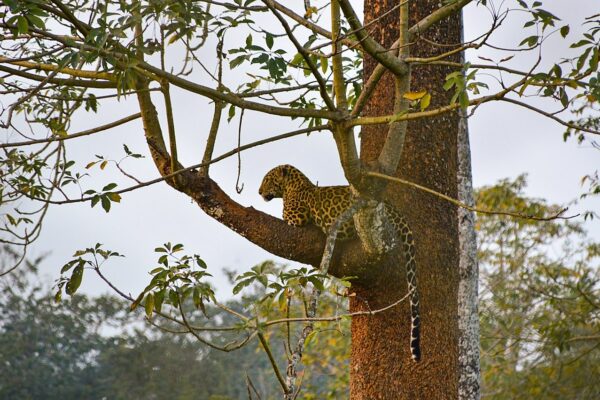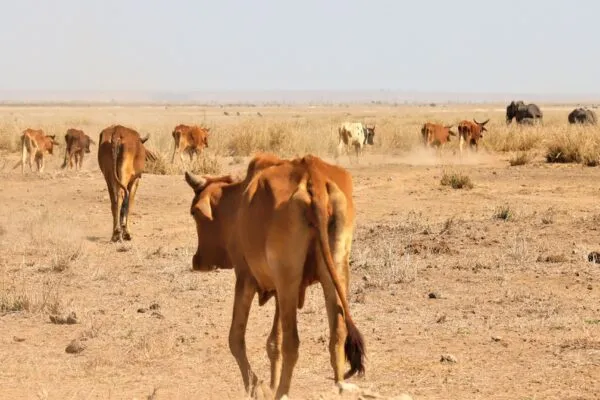Asian Elephant Populations decline in India Despite Conservation Efforts
Asian elephants – with their rounded ears, wrinkled grey skin, and frolicking habits – are undoubtedly charming and adorable. Their terrain once expanded from Syria to China more than nine million square kilometres. But with the fragmentation of habitat owing to farming, industry, and the growth of anthropogenic activities in the close proximity of forested areas – Asian elephant populations are scattered through a handful of nations.
A majority of the estimated Asian elephants (Elephas maximus indicus) are in India; while the rest are found in Sri Lanka, Thailand, Indonesia, Nepal, and other countries in South and Southeast Asia. Since 1986, the Asian elephant has been listed as an endangered species on the International Union for Conservation of Nature (IUCN) Red List. The population of pachyderms has declined by an estimated 50 percent in the past three generations to less than 50,000.
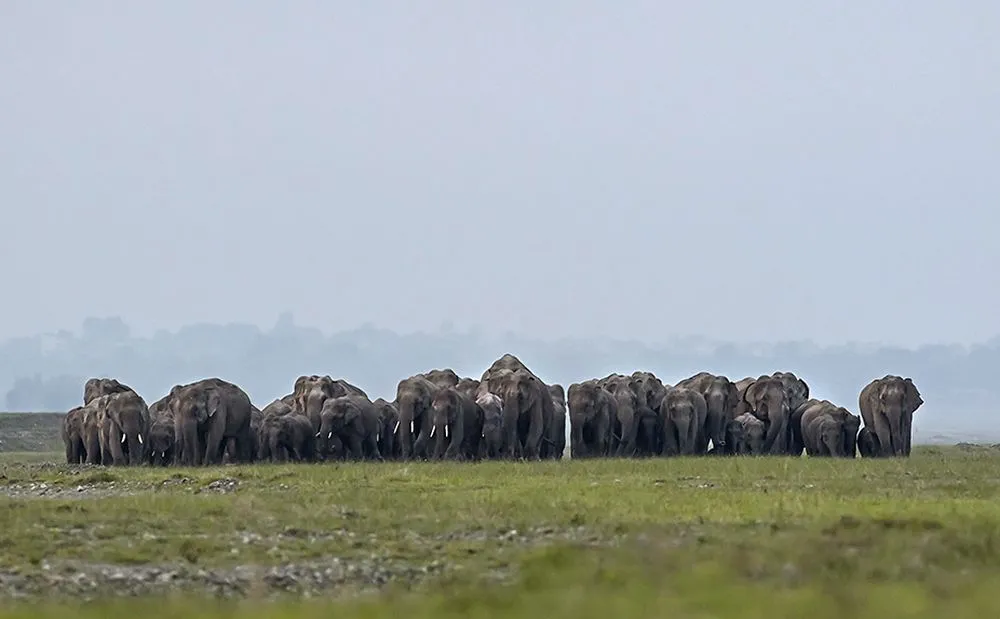
Owing to various reasons, the Asian elephant populations in India are in decline | Image: Avijan Saha
Decline of Elephant Populations in India
Elephants are not stationary animals – they migrate over long distances in search of food, water, shelter and mates. They constantly move across the landscapes – domestic and foreign alike. However, constantly shrinking habitats, changing land-use patterns, urbanisation and an expanding human population have emerged as undeniable threats to elephant populations in India.
According to the 2017 elephant census, India has 27,312 elephants – which is a 10 percent decrease compared to the 2012 census with 30,000 elephants in the country. India’s elephant populations are spread in the northern, east-central, northeast, and southern region of the subcontinent, with nearly 12,000 of them residing in the southern parts. Karnataka houses over 6,000 pachyderms, while Assam has 5,719 of these animals.
Also Read: West Bengal Becomes Human-Elephant Conflict Zone Amid Receding Forest Cover
To avoid the extinction of this majestic animal, India started Project Elephant in 1992 to protect the Asian elephant, its habitat and corridors, and address the man-elephant conflict. But peaceful coexistence has been more of a theorized concept, rather than a regular practice in the country.
The 2010 ‘Gajah’ report had urged the government to establish a national Elephant Conservation Authority (NECA), similar to that of the National Tiger Conservation Authority, to strengthen elephant conservation work. However, a decade later this call of action is still unmet.
There are around 30 elephant reserves across the country covering about 65,000 square kilometres – but the reserves and wildlife corridors have poor legitimate protection, which means that forest lands in such areas can easily fall prey to any non-forest purpose, including various anthropogenic activities.
One of the largest land mammals, elephants migrate over wide rage landscapes and any restrictions in their movements are met with aggravated and agitated behaviour by the animal. Nevertheless, rather than taking into account elephant biology, their behaviour and migration patterns – the Ministry of Environment, Forest and Climate Change unmindfully offers suggestions to restrict the movement of elephants inside particular forested areas. Experts feel that such measures would instead worsen the conflict with humans.
Human-Elephant Conflict
Human-animal conflicts are no news and have been occurring since prehistoric times. Nonetheless, such cases have become increasingly a common occurrence, which often result in fatalities on both sides. India’s wild elephants are increasingly coming into conflict with local farmers and villagers, causing property damage, financial losses and death. Today, human-elephant conflict kills roughly 400 people and 100 elephants in the country every year.
The main cause of human-elephant conflicts in India is habitat degradation and overabundance, which refers to an elephant population that has grown too large for its territory – although, the truth is that their habitat has shrunk too far to fulfill their survival needs. In essence, the wildlands are being encroached upon, and owing to habitat loss humankind has devastated wildlife communities across India.
Elephants are some of the most daunting wild animals and it is quite difficult to approach elephants in general. They run amuck when hungry and destroy everything in their path – be it homes, fields, or other living beings. A 2019 report stated that over 2,300 people lost their lives at the hands of elephants in the last five years. The statistics reveal that people are still approaching these dangerous animals in close proximity willingly or unwillingly.
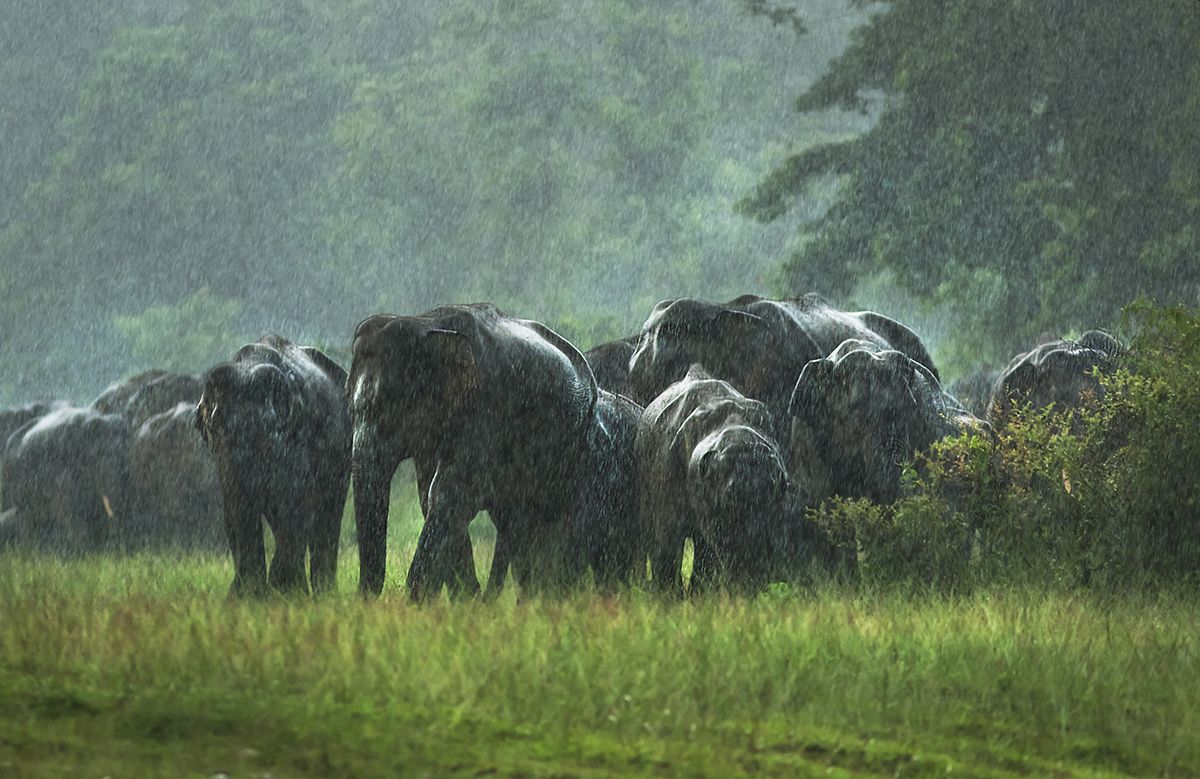
The loss of habitat has resulted in escalated human-elephant conflicts | Image: Avijan Saha
When elephants destroy the crop fields, the farmers lose their entire livelihood – infuriating them into taking drastic steps to get rid of the animals. Most of the affected people are often poverty-stricken farmers and villagers. With their lives and crops at stake, they get riled up and their admiration towards elephants gradually ends. This attitude towards elephants weakens conservation efforts to protect the species.
Resultantly, in order to protect their crops, they use snares, traps, electric fencing, sound machines, rudimentary scarecrows, and explosives devices. The negative exchanges in the form of crop and property damages, loss of human lives, retaliatory killings, and poaching pose a grave threat to the elephant populations.
Concerns over Shrinking Habitat
India is struggling to accommodate the thousands of elephants in the wild, which given the population increase and reducing forest area has become quite the challenge. Despite couple of dozens of elephant reserves across 23 states of the country, no sanctuary has a viable population for long-term conservation.
The reasons for these low numbers include the shape and construct of these sanctuaries, most of which are small-sized for considerable elephant populace to move around; anthropogenic pressures created by dozens of human settlements across their peripheries; and a lack of water, shade, and grass, as well as a reduction in forest cover.
Given these circumstances, elephant deaths due to natural causes or human-animal conflicts have spiked over the past few years to a worrisome level. Moreover, the highways and railway tracks cutting through various elephant movement corridors across the country are exacerbating the problem.
With forest covers reducing and shifting rainfall patterns, the animals are not getting enough food to survive; therefore, they raid nearby human settlements and crop fields – which consequently raises human-elephant confrontations. It hard to comprehend how the pachyderms are managing to survive in a landscape that had shrunk and transformed around them.
Threat from Electric Fences
As many farmers view elephants as the world’s largest, heaviest, and – when they get angry – most frightening pests, they take drastic steps to deter these pests – one of them being the installation of electric fences. Electric fences not only have proved to be effective, but deadly to everyone coming in their contact. In the last decade, over 500 elephants have died of electrocution.
According to the official data, between 2016-17 and 2018-19 about 314 elephants were killed – due to electrocution (206), train accidents (60), poisoning (21), and poaching (27). During the same time period, the conflicts led to the death of 1,474 people.
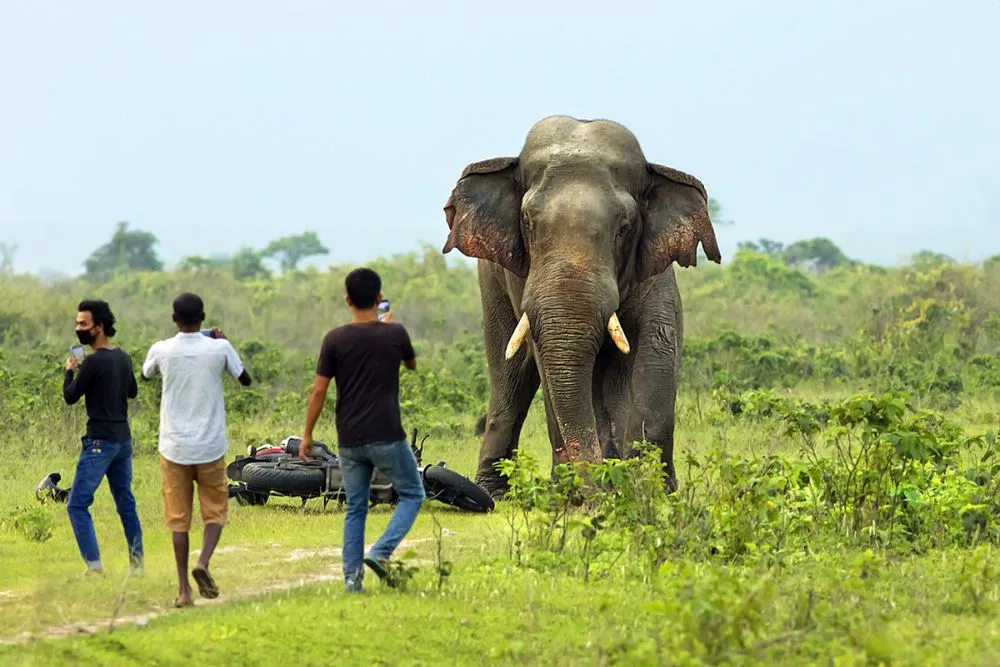
Various threats, especially anthropogenic activities are the reason for the decline of elephant populations in India | Image: Avijan Saha
The conflicts between humans and elephants have reached a crisis point. As the animals have begun to raid farms in search of food, it has become common for local people to attack and kill them in retaliation. While the locals revere this majestic animal, the destruction of their crops turns the admiration into hatred – resulting in the installment of electric fences around their fields and consequently killing of the elephants.
Moreover, the installation of electric fences on domestic and international borders have disrupted the seasonal migration of the elephants. This unsettling change not only deprives them of food and water but also affect their mating patterns.
Conservation Efforts
In order to avoid human-elephant encounters, the forest department and locals have dug deep and wide trenches to deter elephants away from human settlements. In addition to that, the installation of solar-powered fencing, underpasses have been dug to discourage the animals from crossing the highways.
Furthermore, the forest officials are working to improve the forest habitat and enhance water sources within the sanctuary. Another way to preserve the elephant populations is to establish wide-ranging corridors for elephants.
In late February 2020, delegates from about 82 countries, party to the convention on the Conservation of Migratory Species of Wild Animals, met in Gandhinagar, India; with other experts, UN representatives, and national and international NGOs, for their 13th conference. There they made the decision to add the Asian elephant, along with six other species, to Appendix I, which provides the strictest category to protection.
The Indian government’s proposal to include the Asian elephant stated that while the majority of the population lives in India, the rest is spread among other countries, several of which share borders. Under the convention – a UN co-operated agreement to conserve wild migratory species – the elephants, at least in theory, be allowed to migrate between nations without interruption.
The trans-border movements need to thrive for elephant populations to survive; if these movements are cut or lost the animal populations are doomed. The need of the hour is to separate the issue of conservation from that of conflict management while recognizing and addressing both concerns. It has become imperative to prevent the decline in elephant populations in India and in the rest of the world, to preserve this majestic animal for future generations.
